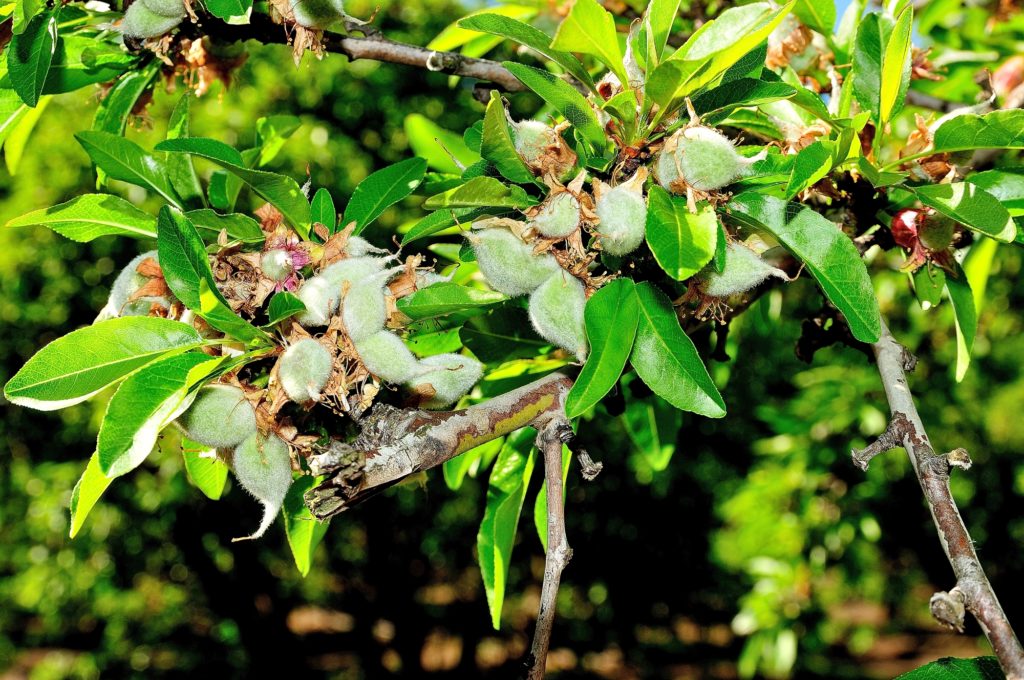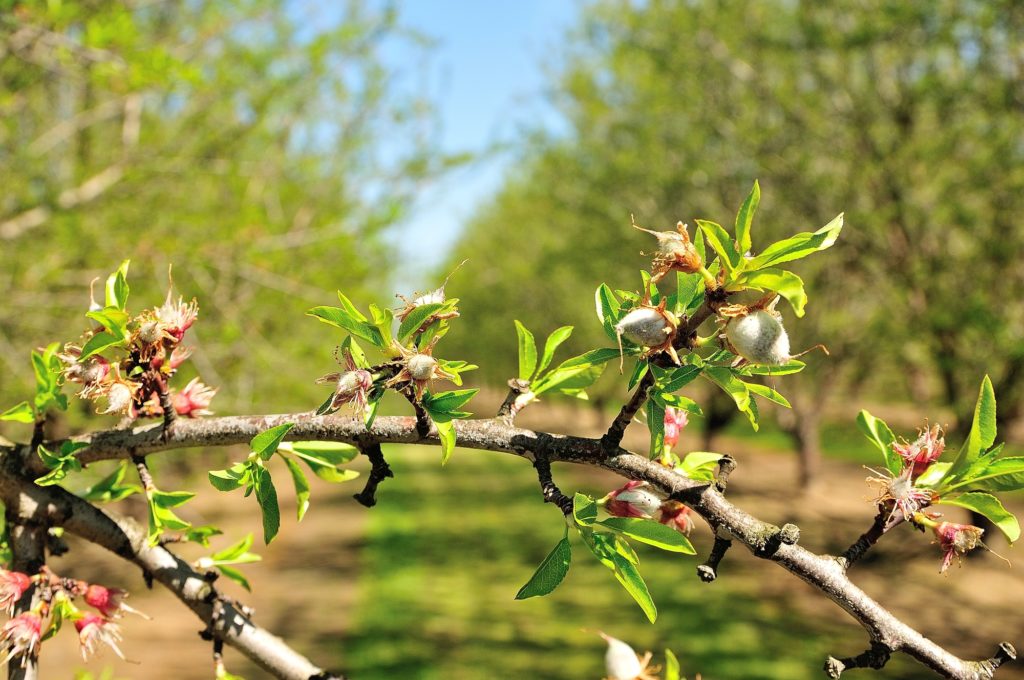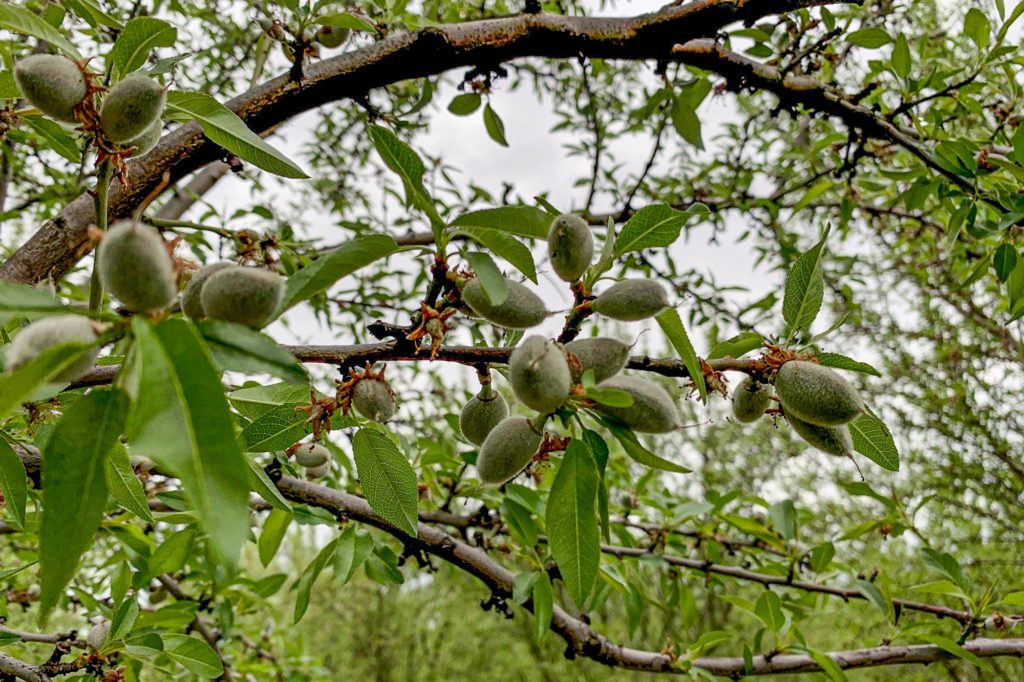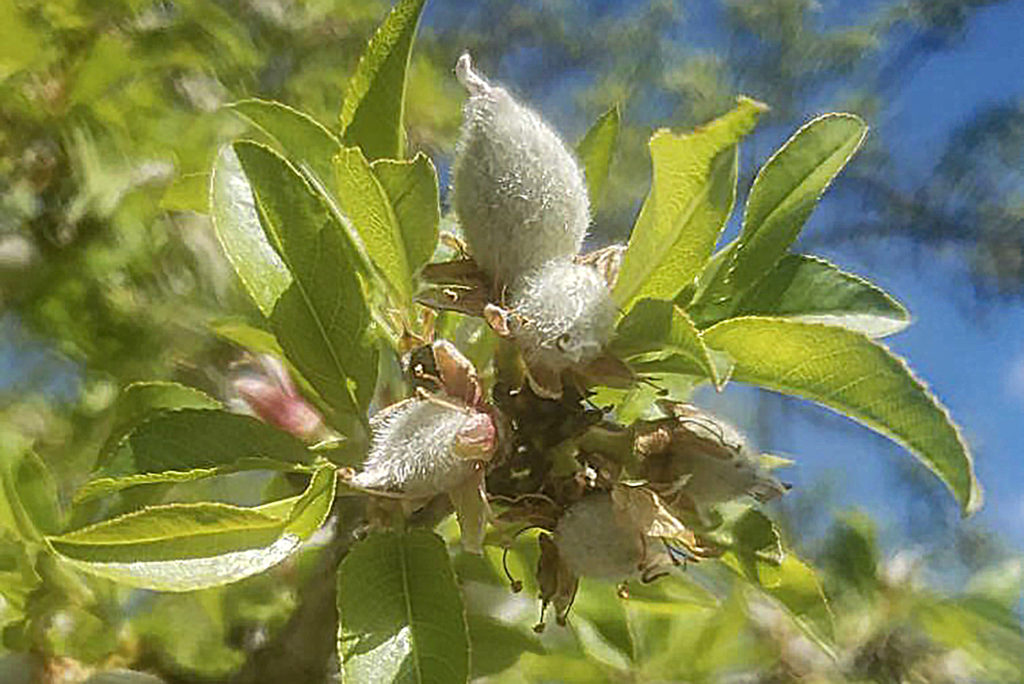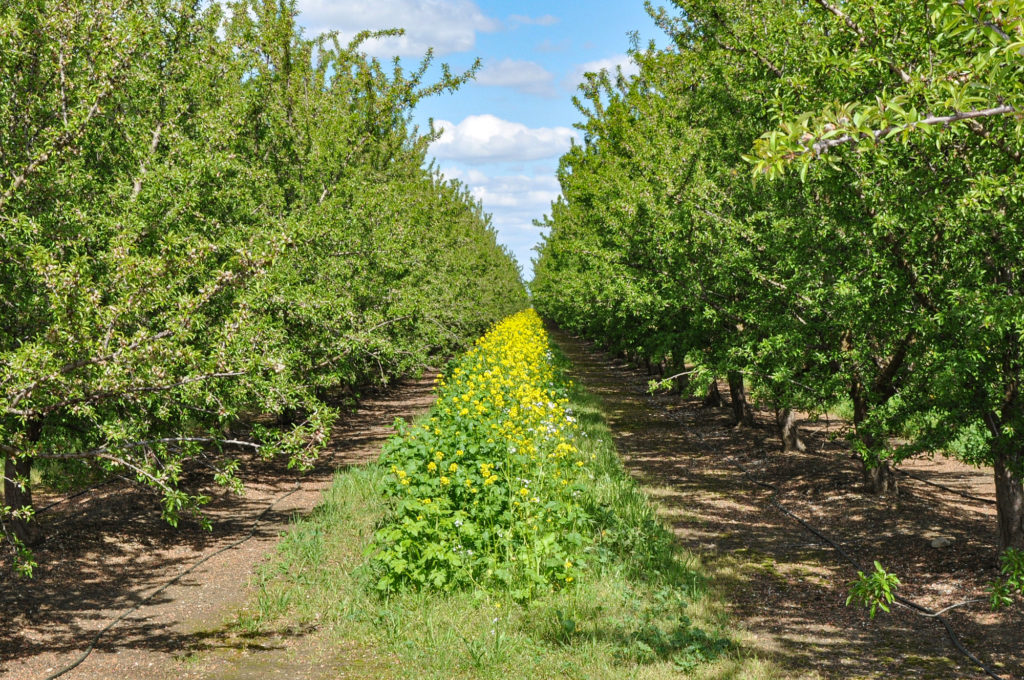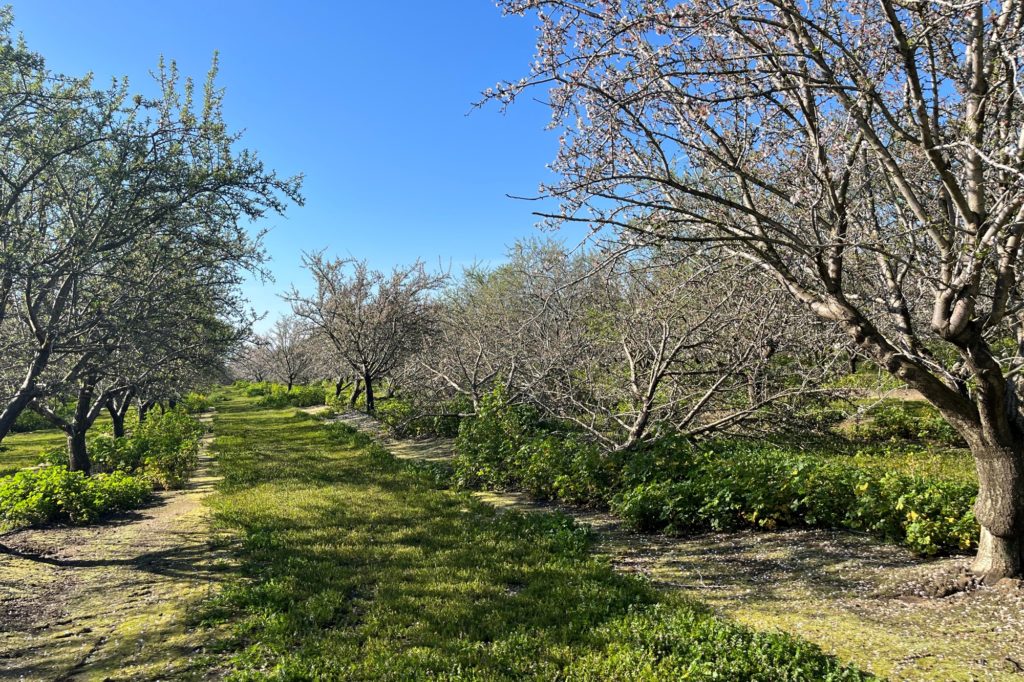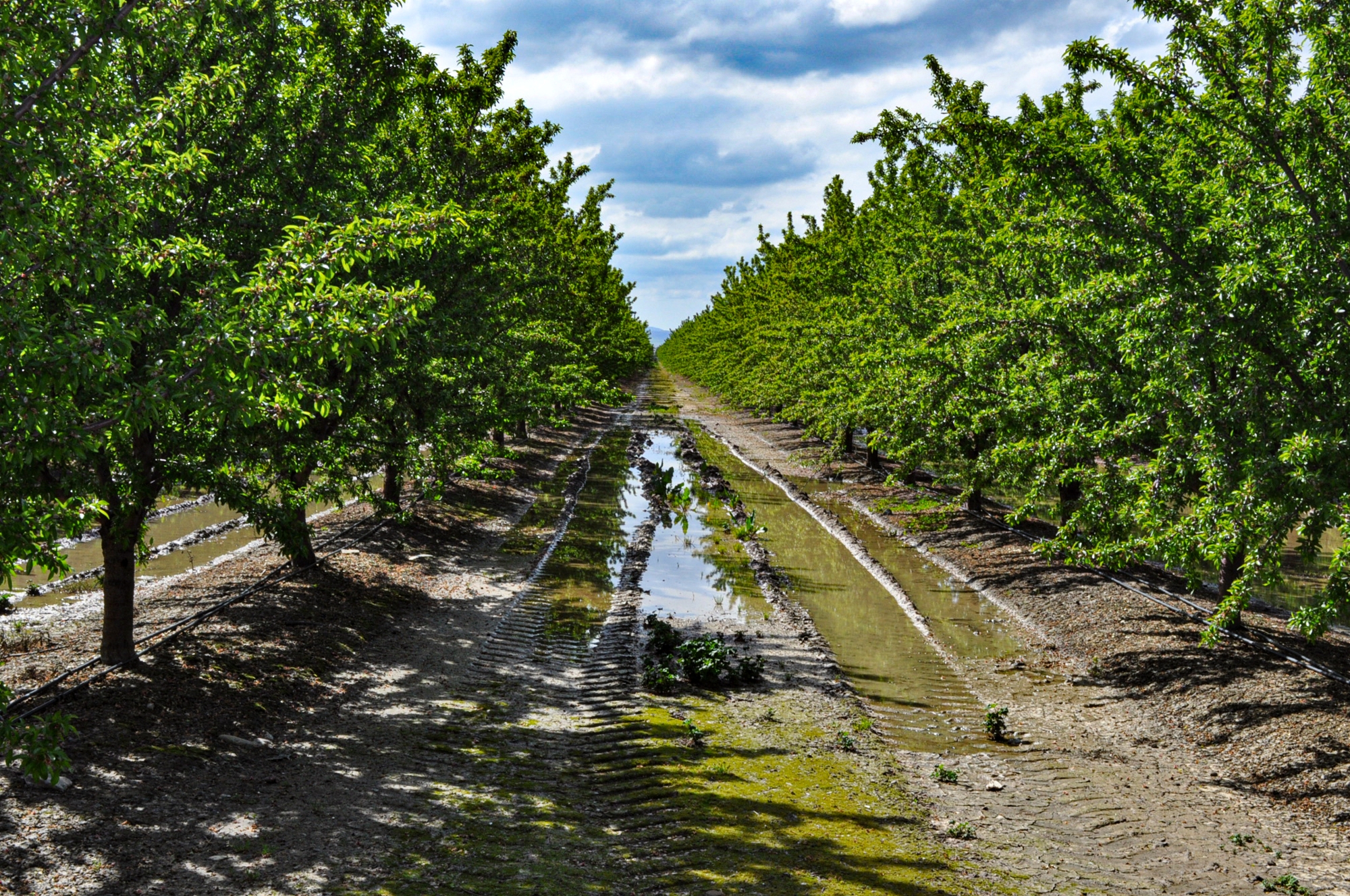
This report covers conditions and observations made between Saturday March 18 and Sunday, April 2, 2023. The next scheduled report will be posted on Monday, May 1, 2023. In the event of any significant occurrences prior to that date, this site will be updated as soon as possible.
Cold, wet weather dominated the last two weeks of March in all growing regions, with the passage of several weather systems over the Central Valley. Temperatures remained unseasonably cool during the period, with daytime highs ranging between the mid and upper 50’s to mid and upper 60’s (Sacramento set a new record low daily maximum temperature during the last week of March). Meanwhile, morning lows ranged between the lower 30’s and upper 40’s, with coldest locations in the Sacramento and northern San Joaquin Valleys dipping just below freezing on March 27th. While not wanting to add more water to the soil, the potentially damaging temperatures inspired growers in the coldest locations to activate their irrigation systems to warm the air within the orchards and protect the developing crop. However, several growers in the Esparto area of Yolo County have reported damage.
The passage of each storm system brought more rain to the Valley and snow to the Sierra Nevada watershed, adding to the already record amounts. Rainfall totals during the period ranged from just over one-half inch in the southern San Joaquin Valley to over four and one-half inches along the west side of the Sacramento Valley. The recent storm systems also generated vigorous thunderstorms in several areas that spawned downpouring rain and hail. Strong winds with speeds in excess of 20 mph on several days during the period also toppled trees in many orchards around the Valley. The combination of saturated soils and high winds wreaked havoc for some growers, where enough trees were blown over to render their orchards un-farmable.
The unseasonably cold conditions that have dominated the 2023 bloom and post-bloom period have significantly reduced the pace of development in all regions of the Valley. This has complicated grower’s ability to evaluate their crops, as well as decisions on crop management. As shown in the photos accompanying this report, nutlets of all varieties have been differentiating in size, the normal process where those that were not fertilized during the bloom wither and fall from the tree. Of those that remain, observers are reporting two to three sizes splitting and breaking free of their jackets. Experience has proven that the smallest of the sizes will be shed from the trees, a process that is normally well underway by the end of March. However, this year the cold temperatures have delayed the shedding process, making crop evaluations a bit more challenging. An interesting note this year is the number of “twin nutlets” present in the developing crop. While visible in all varieties, the Independence variety in particular is displaying the greatest proportion. Experience indicates that these “twins” will be shed from the trees in the coming weeks and very few will be retained to maturity.
The nearly continuous stream of storm systems has left orchard soils cold and saturated. As a result, the foliage in many orchards is presenting a pale green to yellow hue, due to anaerobic conditions within the root zone and poor nutrient levels. Providing fertilizer materials has been difficult. Many soils are too wet to support machinery used to apply fertilizers and no one wants to add water in order to apply liquid fertilizer through irrigation. In any event, nutrient uptake and metabolization by the trees is also problematic due to the cold soils. Growers and Pest Control Advisors are also concerned that the prolonged wet conditions will promote the incidence of phytophthora root infections that will impact tree vigor during the growing season.
For all of the issues the weather has created, one fringe benefit of the cold temperatures is the reduced incidence of fungal diseases within the canopy. However, where treatment has been warranted, the saturated conditions have complicated matters requiring applications to be made by air, and many orchards have not yet received a single treatment. Fortunately, the winds have helped to scrub splitting jackets from the trees, thus reducing the potential for Jacket Rot and Green Fruit Rot.
Several local irrigation districts have begun their delivery seasons, but as previously noted, soil moisture levels have made irrigation unwarranted. Abundant storage in the state’s reservoirs, and the promise of the record snowpack in the Sierra Nevada mountains are translating into ample water supplies for irrigation. Districts sourcing their supplies from the federal Central Valley Project are set to receive 80% allocations, while the allocation from the State Water Project have been set at 75% of contracted amounts.
Much work remains to be done within the orchards. The first order of business will be fertilization in order to provide nutrients for the developing crop. Concurrently, cover crops will be mowed down, blown-over trees will be cut up and removed, and beekeepers will continue removing their hives. The removal of older, low producing orchards was brought to a halt during the past winter. Work will resume as soon as the soils are able to support the weight of the required machinery.
By Mel Machado, Vice President of Member Relations
Photos By: John Aja, Ben Goudie, Justin Elam, Christine Ivory, Trent Voss, KC Stone, Ken Miyamoto, and Mel Machado

